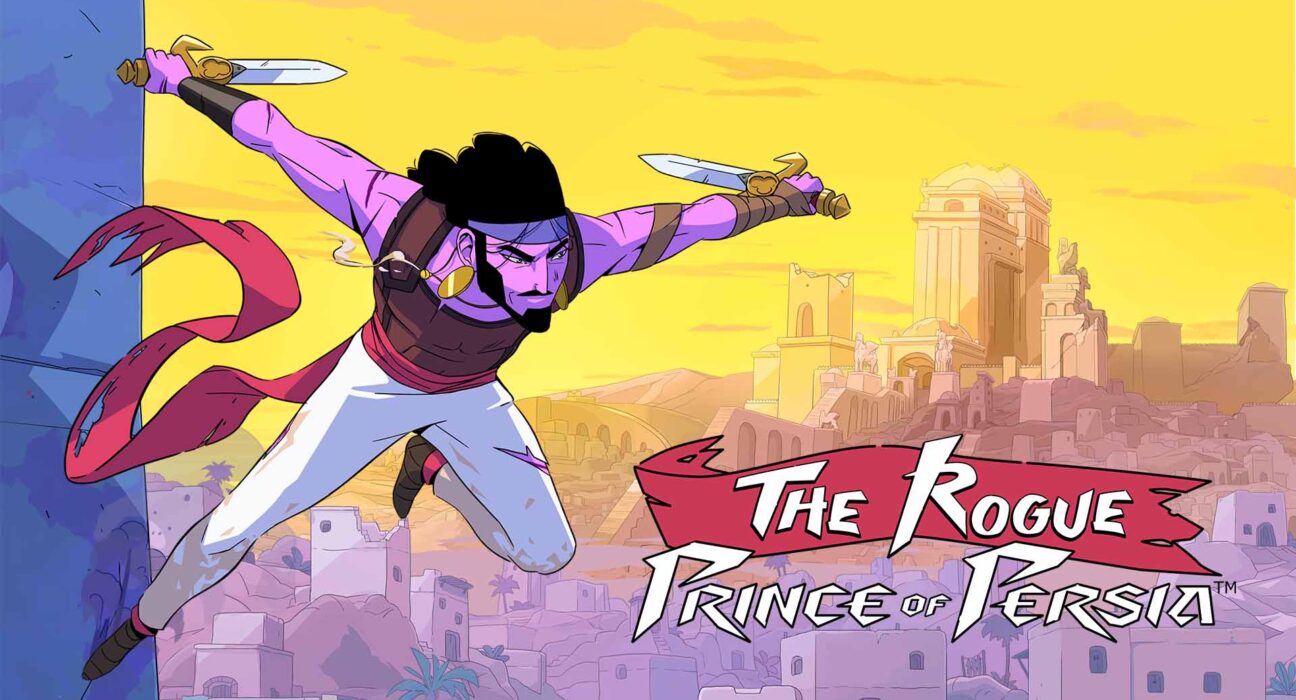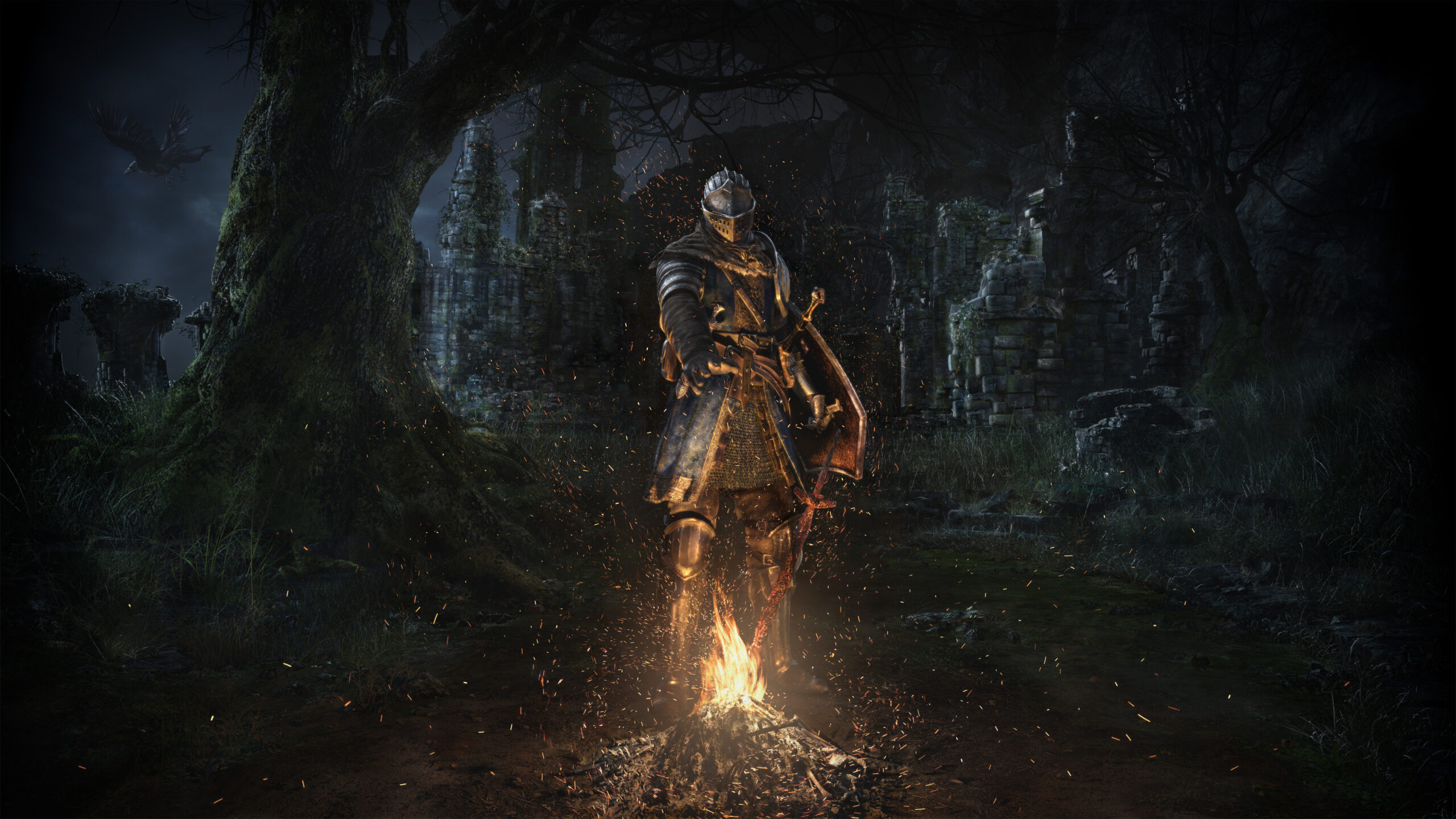- Evil Empire
- Ubisoft
- May 27, 2024 (Early Access)
- PC
Roguelikes and roguelites are becoming all the rage now, with the rise of popular names like Risk of Rain 2, Hades, Returnal, and Dead Cells. That last one will be a point of focus here, as the developer of Dead Cells, Evil Empire, has collaborated with IP owner Ubisoft to create a roguelite Prince of Persia game in the form of The Rogue Prince of Persia. Evil Empire was originally created as a side studio of Motion Twin, who originally developed Dead Cells, and supported the game in its later years, including its DLC expansions such as Dead Cells: Return to Castlevania. Since then, the studio has gone on to collaborate with Ubisoft to create The Rogue Prince of Persia, and while it did experience a small delay due to the unexpected launch of Hades II, this game shows so much damn promise in its Early Access state. It’s incredibly satisfying to play and has some great ideas, but it might be worth holding off on this game for now as what is available is relatively minimal.
The Rogue Prince of Persia puts you in the shoes of The Prince (yes that is his in-game name) as he is coming back to Ctesiphon after the Huns use shaman magic to besiege it. You slowly make your way through the outskirts into the city and, at every step of the way, there are Hunnish forces who would like nothing more than to ruin your day. You find the kingdom pillaged and ruined, with many of your people injured and dying.
The story definitely feels more like set dressing or contextualisation for the character’s motivations but that’s okay! As with Hades, the game clearly isn’t about its overarching plot, but the smaller details in between. There are a number of key characters that you will find within the various biomes of The Rogue Prince of Persia. These characters range from friends and acquaintances to members of your family. They all have a role to play and whether you engage with them is entirely up to you (hint: you should absolutely engage with them).
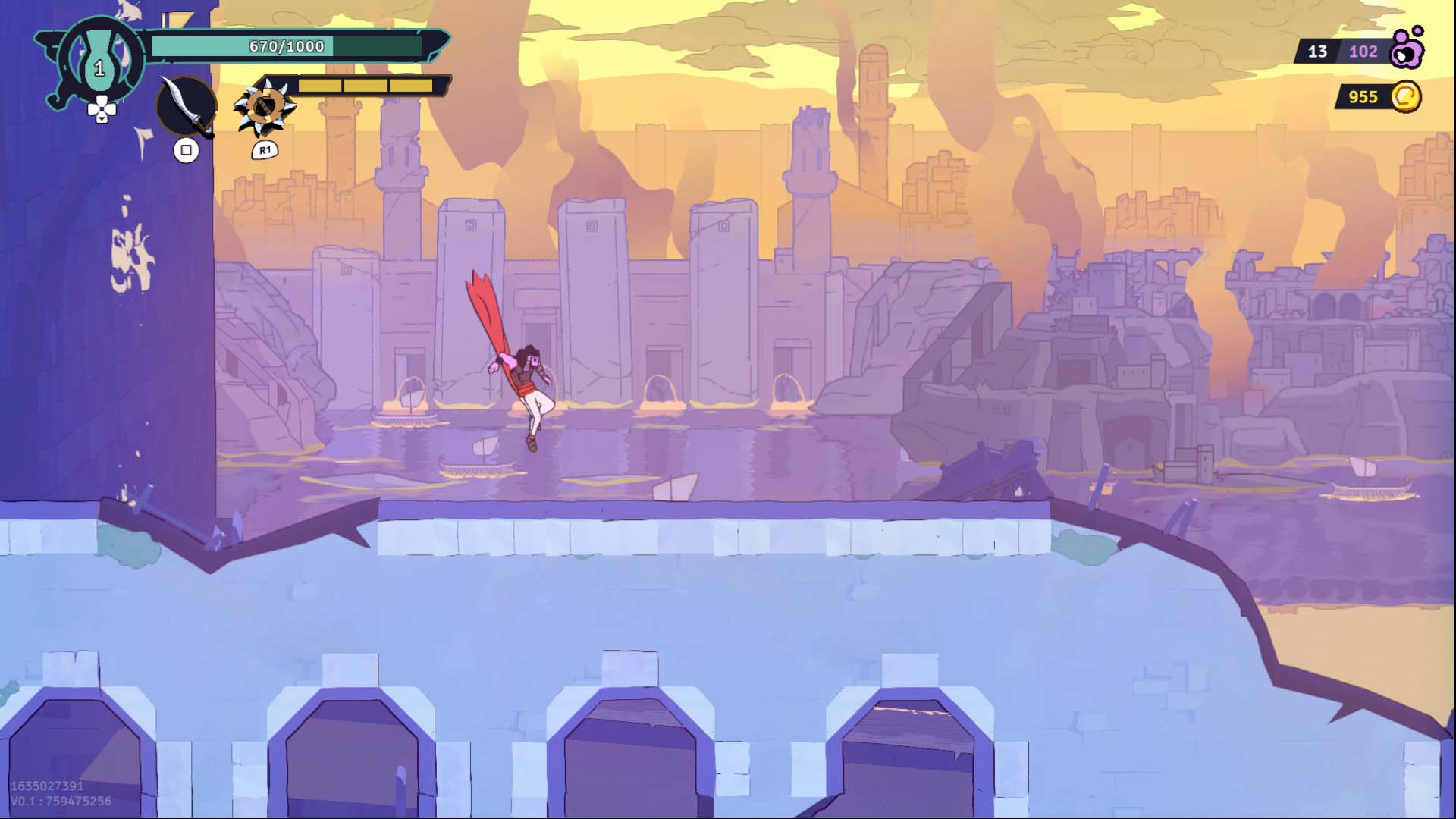
If you do choose to engage with these characters, you’ll be treated to some well-written, concise dialogue and exposition, which explains some of the finer details of the events that occurred during the Hun invasion. You’ll learn how exactly the Huns breached the kingdom, and who is in immediate danger. You might even pick up some clues about bosses and their roles in the hierarchy of the Huns.
Speaking of bosses, what is available is very. At the time of writing, there are only two bosses available, with more to be added down the line as the game’s development progresses. These bosses vary in the design by a surprising amount. With one being your more traditional 2D action boss, and the other requiring you to be more spatially aware and hide from area-of-effect attacks. The way these fights play out works into one of my favourite parts about this game: the movement.
If you have played any of the older Prince of Persia games, you would know that these games are synonymous with wall running and parkour. After all, they were effectively a precursor to the Assassin’s Creed games. This idea of the character’s heightened mobility is translated extremely well into the 2D roguelike format. You have your basic wall running to go up ninety-degree angles, and vaulting enemies, but where the idea of wall running and parkour comes in is with the background walls. You have an additional wall run that relies on a solid wall being present in the background, and learning how to use this effectively is important if you want to get to some of the harder-to-reach areas.
Where the game’s parkour and advanced traversal shine are in its puzzle areas. Virtually all of the puzzles require you to meaningfully engage with the parkour systems. Wall running, jumping and dashing, vaulting, hanging off of poles, wall jumping and more. Because the game’s six biomes all are designed in wholly unique ways, these systems shine. For instance, the Academy biome has a room where you need to activate and deactivate walls in specific ways to grant you passage. It isn’t as simple as “go from point A to point B” and instead sends you in different directions to make use of your various movement skills. It all feels incredibly good and is a huge part of why I enjoyed my time with this game so damn much.
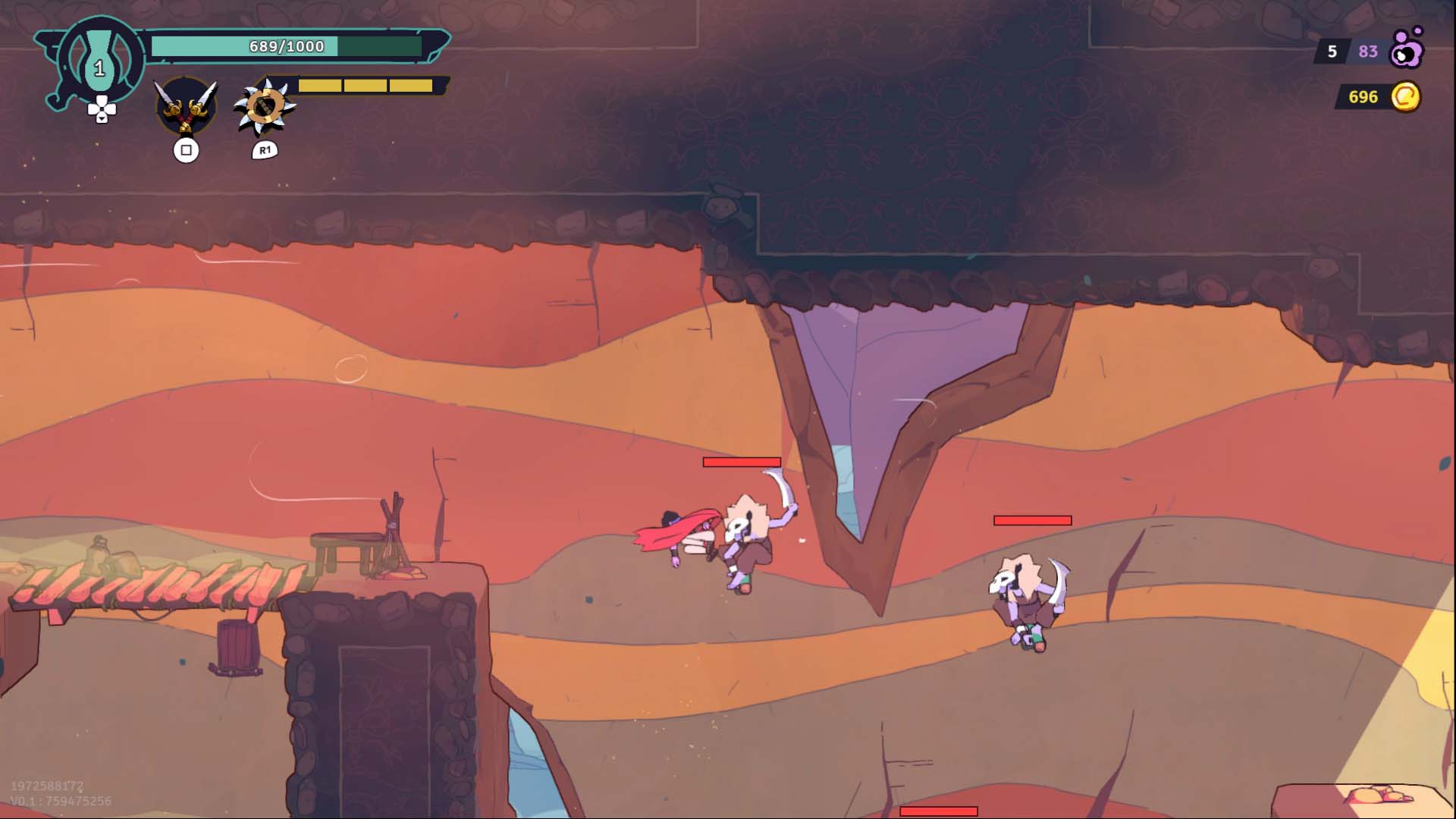
The other major point of the game that feels good to engage with is the combat. There are a lot of games with incredibly satisfying 2D combat. Salt & Sanctuary, Hollow Knight, Dead Cells, hell, even Terraria feels incredibly good (most of the time). The Rogue Prince of Persia stands among these greats with combat that rewards both skill and experimentation. The skill is self-explanatory, learning when you can and can’t attack, when it is appropriate for you to do your basic or heavy attack, and mastering when you should kick your enemies back to stun them. That last one isn’t particularly helpful for bosses, but it is essential for when you find yourself in rooms where there are numerous enemies. Kicking enemies into one another will stun both enemies, leaving them open to a string of attacks. The game adds variety and challenge, with shielded enemies. Dealing with them is as simple as kicking another enemy into the shielded one, but they at least require you to think on your feet. Alternatively, you can chip away at them with your weapon.
A roguelike–or roguelite in this case–lives and dies by its build variety. If the game has enough tools available to make sure each run feels wholly distinct from one another, then you have a recipe for success. Currently, there are eight main weapons available in the game, with six secondary/supplementary weapons available too. Adding to this are the trinkets, which exist as small modifiers to your build. The system here is quite interesting, as you have four slots for trinkets and each trinket has slot upgrades attributed to them. Where the magic in this system lies, however, is the fact that the trinkets upgrade the adjacent slots, not the trinket itself. As an example, I placed a trinket in slot 2, which upgraded slots 1 and 3. Each trinket’s function is tied to a certain slot level, so upgrades from adjacent trinkets unlock these functions. But these slot upgrades only remain as long as the trinket that provided them is still equipped in an adjacent slot, which makes decisions about replacing your trinkets much more difficult.
While there is a fair amount of variety and interplay with these trinkets, I find that there just isn’t enough in the game’s current state. More main weapons, secondary weapons, and trinkets will be added in future updates for the game, but because your build variety almost entirely hinges on trinkets, the small available selection means you will often end up falling into the same builds. Sure, you can use the various weapons, but most of the trinkets boil down to either some kind of on-field effect (like a sludge that would slow enemies caught within it), some kind of healing, gold/currency generation, or a small barrage of knives being thrown upon activation.
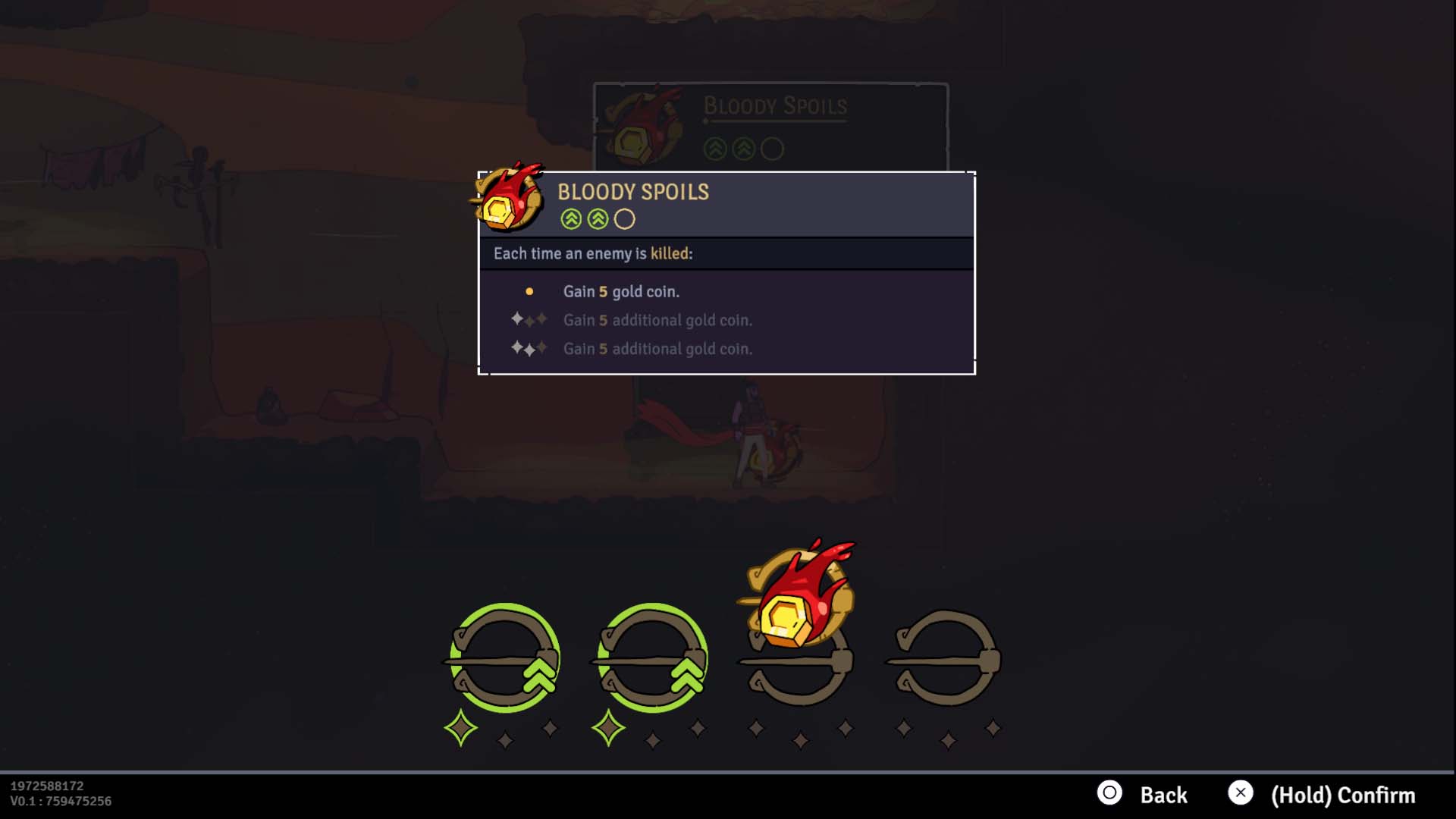
On top of the lacking build variety in its current state (I cannot reiterate “current state” enough, it will be addressed in future updates) each run is very short and ends abruptly. You only face two bosses, and go through a total of four rooms per run (not including boss rooms) so you don’t have that time for your builds to develop to the point where they truly shine. Runs that go for long enough to allow this is the bread and butter for games of this ilk, so if you want a game to be able to invest a lot of time into, The Rogue Prince of Persia is not quite it… yet.
If there is one thing that cannot be denied about this game, it’s the soundtrack. Simply put, it slaps hard. It’s wonderfully written, giving you simple but eloquent beats that play the backdrop to the high-action scenarios you will encounter during your run. The songs are tonally sparse, which is a brilliant choice because the simplicity of the music exists as a wonderful juxtaposition to the potentially chaotic nature of what is happening on screen. There were honestly times where I would stop in my tracks mid-run just so I could listen and appreciate the music.
Overall, my time with the Early Access build of The Rogue Prince of Persia has been extremely positive. While I cannot recommend dropping your money on it if it comes to this or another roguelike, since what is available is very incomplete, what is on display here is still engaging and shows a tremendous amount of promise. Evil Empire is flexing its mastery of the roguelite genre once more, and there is no better recipient of this than Ubisoft’s once-dormant parkour-and-puzzle-solving IP.
PC Early Access code provided by publisher



